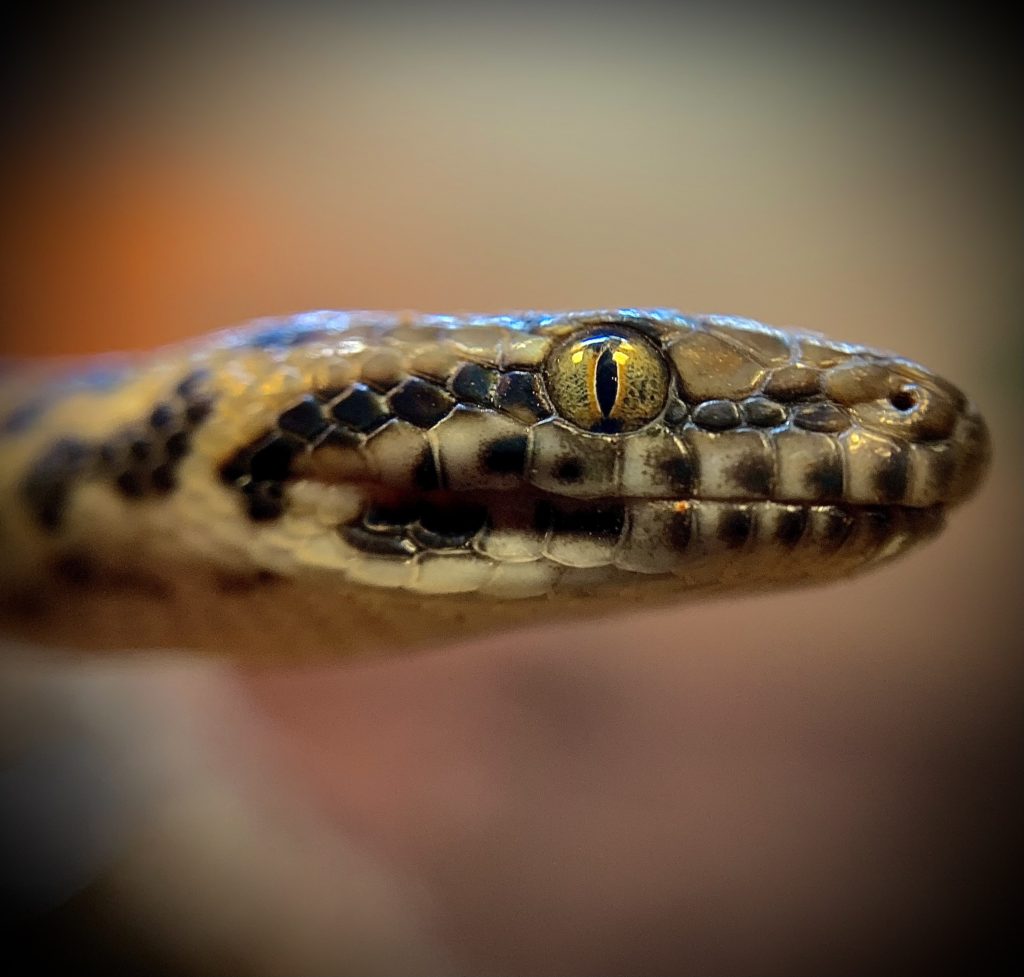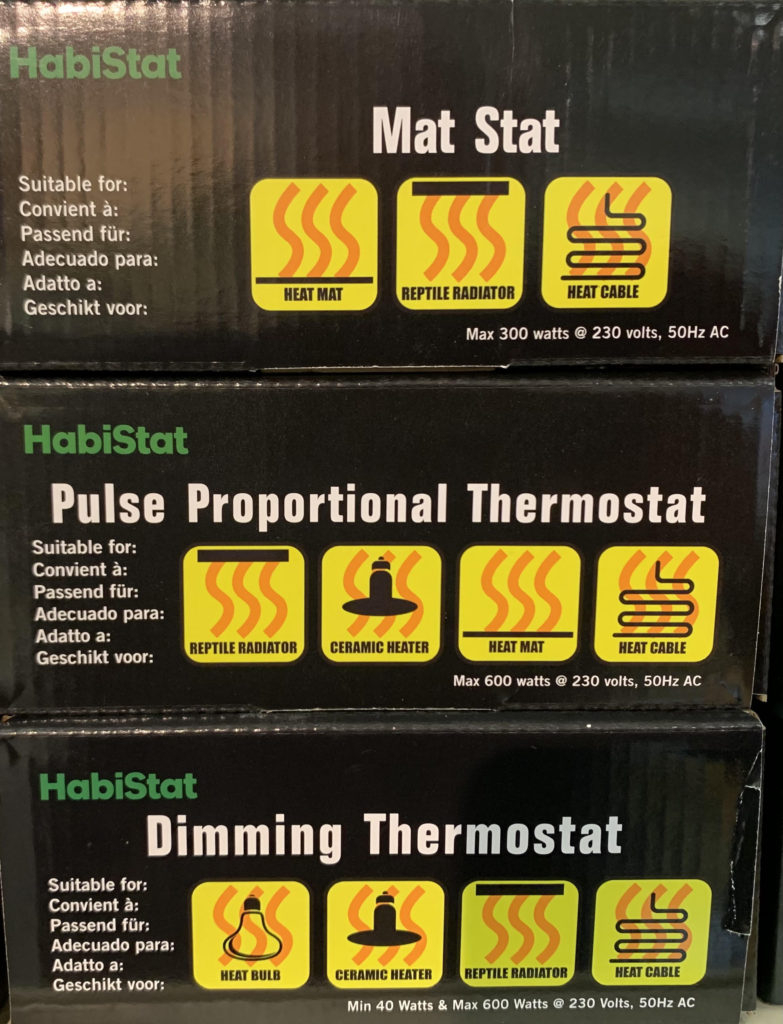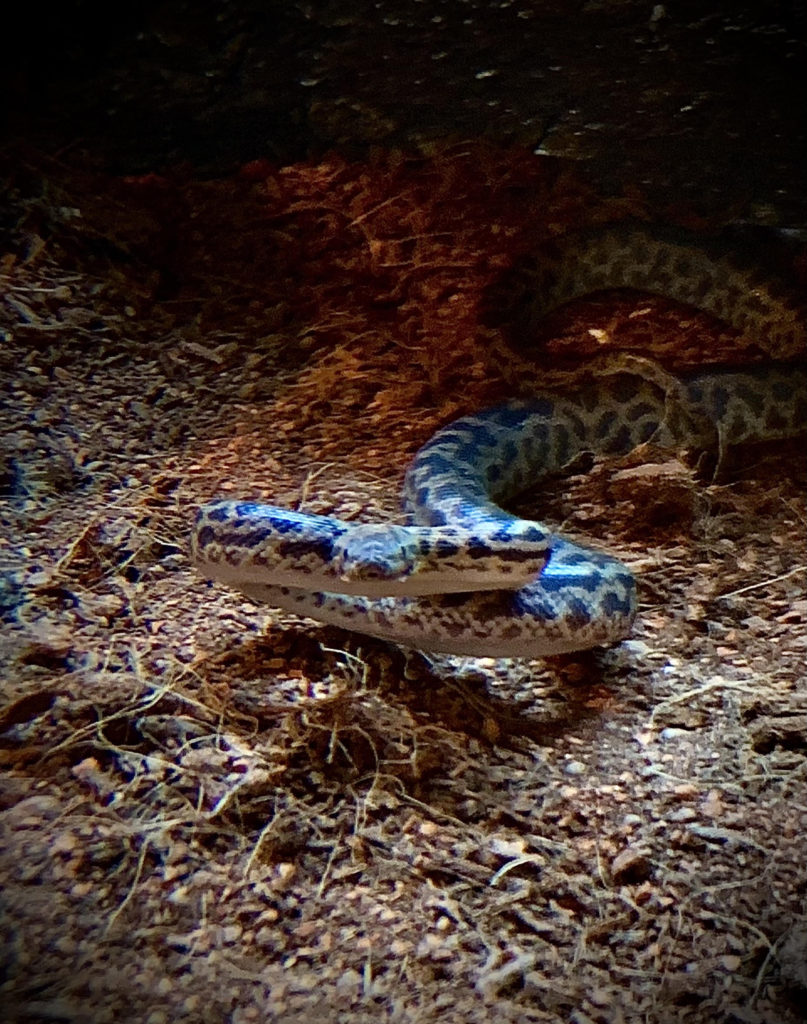The spotted python (Antaresia maculosa) is one of the smallest python species in the world, although it is the largest in its genus (the smallest is the ant hill python). They reach between 90 to 110cm in length and are a relatively slender python. The species ranges from eastern Queensland, Australia down to north eastern New South Wales in the wild but they are readily available as captive bred snakes. Their docile and calm nature, small size and attractive spotted pattern make them fantastic first snakes for someone looking for something a little different to the standard cornsnake/royal python usuallly suggested. Also when enclosure space is an issue the smaller size makes them a great option.

Housing
A spotted python’s natural habitat is dry, open forest. They are often found around rocky outcrops that provide holes and caves for them to hide in. A wooden enclosure around 70 – 90cm is ideal. Glass can be used but be aware that as glass does not keep in the heat the heating bill will be higher and larger wattage heaters are likely to be needed. Done correctly though a bioactive display enclosure will look impressive. Be sure to use appropriate plants that can tolerate lower soil humidity levels.
Heating
The cheapest method of heating a vivarium would be to use a combination of a suitably sized heat mat and on/off thermostat. Due to the smaller size of the spotted python this would suffice (no thermal blocking). However a more steady temperature can be acheived using a ceramic heat emitter and pulse proportional thermostat. If using a ceramic heat emitter and heater guard is essential to prevent the snake touching the very hot surface and burning itself. The temperature should range across the enclosure, with a “high end” and a “low end” so if you have more than one heat source make sure they are at the same end. The hot end wants to be around 29-30 degrees celcius and the cold end 23 – 26 degrees C. This gradient allows the snake to move to different areas to thermoregulate. Most reptiles do not maintain their own body temperature internally and rely on the external temperature of their surroundings so must have areas where they can warm up and cool down.

Lighting
The debate over whether snakes really need UVB goes on. Due to the higher calcium content of their diet many breeders and hobbysists have been keeping snakes without UVB for years with great success. However it can be demonstrated that your spotted python will benefit from low levels of UVB (and UVA) in terms of stimulating natural behaviour and activity as well as improved calcium uptake from the diet. Whatever light source you use needs to be switched on during the day and off at night to give the snake a day/night cycle to stimulate natural behaviour.
Feeding and Watering
We feed our snakes once a week on suitably sized defrosted mice and rats. Being a smaller snake the spotted python will not need to be moved onto rats, as soon as possible as with some larger species. It is never going to need anything larger than a mouse. However it is a good idea to vary the diet, rather than just feed one species of rodent. We feed mice, rats up to small weaner, multimammate mice (actually a type of rat). Hamsters, gerbils, chicks etc. are also available for fussy feeders but spotted puthons are generally good feeders so this wouldn’t normally be necessary. As with all snakes, defrost the food naturally and if necessary warm to blood heat gently (in a plastic bag under your arm if you only have one or two specimens to feed, on top of the viv. above the heater if you have a few). Never defrost or heat the food in a microwave or on a radiator. Snakes can get food poisoning too, although most will simply decline the spoilt rodent. Ensure a water bowl, large enough for the snake to emmerce itself if required, is placed at the cool end of the viv. Don’t place it at the hot end, it will evaporate too quickly and make the viv. too humid. Keep the bowl clean and replace the water daily. It is surprising how quickly bacteriea will grow in the hot, enclosed environment of a vivarium.

Substrate and Decor
I like natural looking enclosures so tend to use natural looking substates. For a dry forest snake like a spotted python we are using a combination of coir, bark chips mixed with a sandy soil. It looks great but it is not what you “have to use”. Any suitable snake substrate such as lignocel, aspen, straight bark chips etc will do. I just prefer trying to create a natural look and feel, you don’t have to. It is easier to spot the poop with the lighter colloured substrates so there is always that to take into account. Spotted pythons are quite shy snakes so really do appreciate their hides. Any non toxic material will do, plastic, resin caves etc. I prefer cork bark (more natural looking and safer than rock stacks) but it’s up to you. A branch will be appreciated and some greenery in the form of silk plants will finish the look off.


